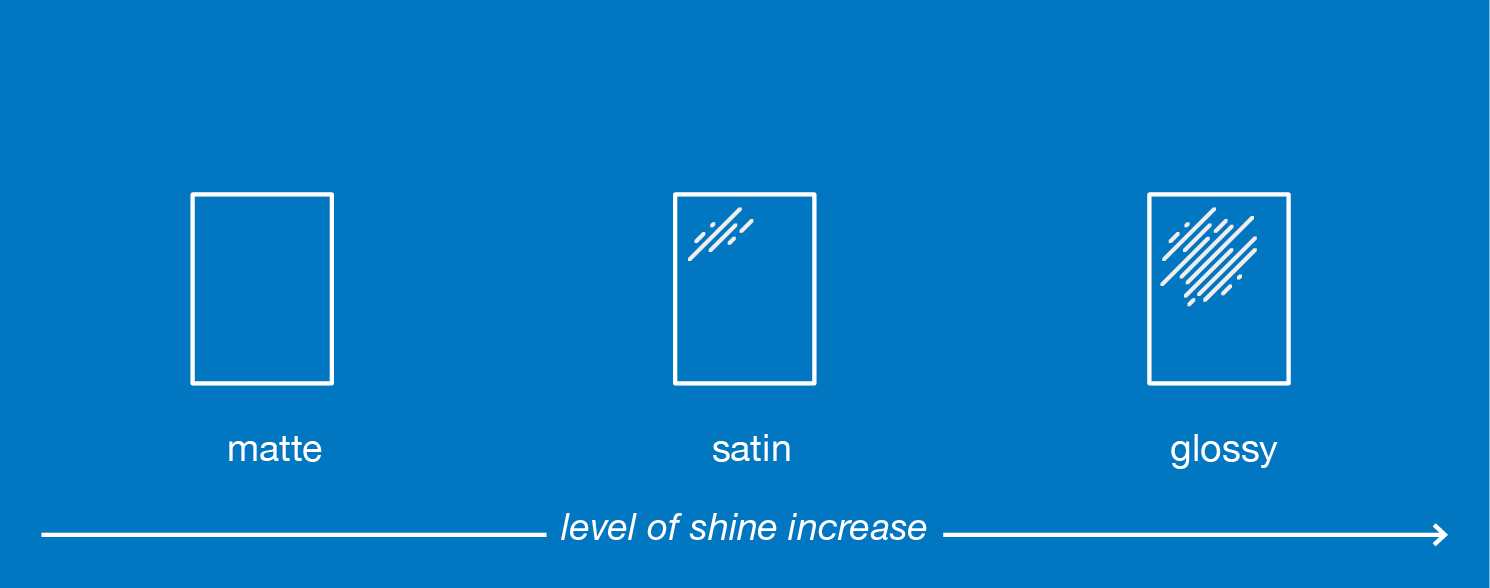A paper’s finish— or the sheen and/or texture of a given sheet of paper— plays a role in the readability of what’s printed on a page, as well as the overall look of your paper project. Whether you’re printing documents, invitations, or printing your own photos, learn more about the different types of paper finishes available to you and what may work best for your project.
Uncoated Paper Finishes
Not all paper is smooth. There are a number of uncoated specialty papers that range in their uses and textures. From printing elegant letterhead to embossing and paper crafting, some paper finishes are more appropriate for some projects than others.
Linen Finish Paper
Paper with a linen finish has a distinctive crosshatch pattern and subtle texture. This uncoated paper has a look and feel like its namesake fabric.
Uses: Linen paper’s classic and classy styling makes it ideal for use on stationery or business letterhead.

Linen Paper is great for:
Vellum Finish Paper
At first glance, vellum paper finish appears smooth. Closer examination of this paper reveals a subtle “rough” finish uniformly applied across the whole of the sheet. Its finish is not quite as rough as linen paper finish, but there is definite texture to vellum finish paper. If you touch it, it may feel slightly like an eggshell.
Uses: Vellum finish paper is coveted among paper crafters and scrapbookers. Its finish makes it perfect for embossing, stamping, or coloring with pencils, watercolors, or chalk.

Vellum Paper is great for:
Laid Finish
Laid finish paper has subtle lines textured on the page throughout. It is slightly smoother than vellum paper, but both bring an air of refinement and uniqueness to each paper project.
Uses: This particular finish of paper is used for business letterhead or personal stationery.

Laid Paper is great for:
Coated Paper Finishes
Like its uncoated cousin, coated paper has its own set of finishes, too. Learn more about the types of finishes you’ll find on coated papers and the overall look and feel they can lend to your printable projects.
Photo Papers
Not all paper finishes are suitable for printing documents. Some types of paper are best suited for printing photos. Photo paper is typically coated so that ink is not absorbed into the page, which can dim the color and clarity of the image.
You may prefer a more sophisticated matte finish or a more eye-catching glossy print. Here is some info to help you decide.

Photo Quality Paper Finishes
Glossy Paper
Glossy paper has gone through a glazing process that gives it a unique sheen. It does not absorb ink in the way copy paper does. Rather, its coating allows colored ink to adhere directly to the surface, giving vivid detail and definition to images.
Uses: Glossy paper isn’t always ideal for readability of documents. However, when it comes to printing your own high-quality photos, a glossy finish highlights all of the tiny details of your pictures.
Matte Paper
Matte paper lacks the sheen of glossy paper and has a rougher texture. Matte photo paper has a finish that is slightly duller than glossy, but still offers the same brilliant level of color reproduction. Colors remain vibrant on matte paper since its coating prevents it from absorbing ink into the paper.
Uses: While important documents and tickets can be printed on premium matte paper, its coating makes it an excellent choice for printing photographs.
Satin Finish Paper
Rather than calling it by the oxymoron of “glossy matte paper,” satin finish paper (also known as “lustre finish paper” or “silk finish paper”) offers the breathtaking color of glossy paper without the potential for visible fingerprints— a feature typically associated with matte paper. Another distinguishing feature of satin finish paper is that it has a very slight texture that makes it resistant to glare and fingerprints. Nevertheless, its color reproduction capabilities are quite vibrant.
Uses: Satin finish paper is ideal for printing gallery-quality photographs, photos for a working portfolio, or inclusion in a photo album or scrapbook.